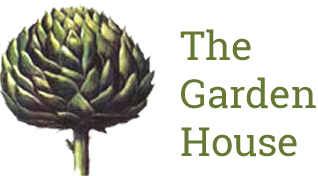Hardy and Half-hardy Annuals When to Sow
Posted:4 March 2012
Hardy Annuals – are plants with a life cycle of one year that will tolerate the frost and can be sown without heat and will be fine to leave outside, though preferably with some shelter. Examples of these would be Nigella and Cornflowers. You can sow them in September/October or from now until end March. Some, such as sweet peas, are best grown in modules to avoid root disturbance. Most make great cut flowers.
Some vegetables have hardy varieties that are fine to leave outside in the cold weather – I have just picked some salad leaves, mizuna, mibuna, giant red mustard and pak choi that have been growing in the veg plot quite happily, unprotected, during all this cold weather. You can also get hardy broad beans, such as Aqua Dulce Claudia, and onion sets that will be fine outside during the winter.
There are also some lettuce varieties that do well outside. The following all survive in Brighton (if you live somewhere cooler and wetter, try these in pots or window boxes sheltered against your shed or grown in a greenhouse if you have one). Try Green Oak Leaf if you pick it carefully, just harvesting a few outside leaves at a time, you should be able to pick from six to eight weeks from sowing, right through the winter. Then, as spring begins, it really pushes out a ton of leaves from early March until at least the end of April. The same applies to the red-coloured Cocarde which being red also keeps off the slugs and snails for some reason they don’t seem to be attracted to red veg! The American variety, Black Seeded Simpson, is a surprisingly hardy variety with a lovely texture and taste, and the famously winter-hardy lettuce Valdor is soft, rounded, and delicious.
These should keep you in salads through the winter.
Half-hardy Annuals – are plants that will not tolerate the frost and need heat to germinate (around 20ºc). Their life cycle, at least in our climate and like the hardy annuals, is one year from germination to dying. These include veg plants such as tomatoes, chillies, aubergines, peppers, runner beans, courgettes, sweet corn, and many of the brassicas cabbage, Brussels sprouts, broccoli. There are also many half-hardy flowers, often used in containers or bedding such as Petunias, Impatiens, Lobelia.
With half-hardy annuals the important thing is timing – some plants, for example chillies and Petunias, need a really long growing season and so, if you have a propagator, it is a good idea to sow them now. This will allow plenty of time for them to mature and you will be more likely to get good fruiting and flowering in the summer as they will have had maximum time to receive as much light and heat as possible.
Other plants, such as Cosmos, nasturtiums, sunflowers, sweet corn and courgettes, germinate and grow quickly, as do runner beans so leave these and sow them later on in March or April. They won’t be safe to plant outside until danger of frost has passed, around mid May in this part of the country, and so if you sow them too soon you will have a kitchen full of sprouting runner beans with nowhere to put them! The chillies and aubergines and other slow growing things, that you are sowing now will need to be kept somewhere frost free until mid May to – so bear that in mind and don’t sow too many seeds!
As with so much in the garden, planning is vitally important – be realistic about what you can manage – allowing for a few failures and some to give away.
At the Garden House we have seeds of many of the above for sale, so do contact us if you would like to purchase some.
We also have a workshop on Growing Your Own Cut Flowers on Saturday 21 April so do come along and learn how to make your own cutting garden.

